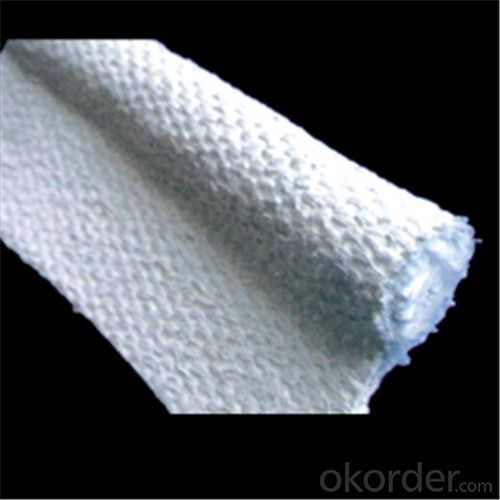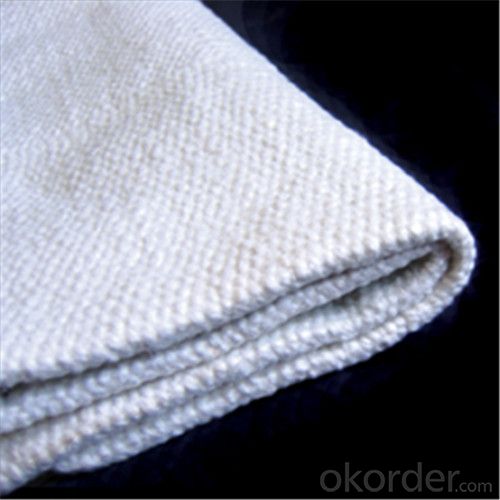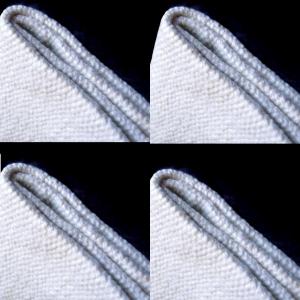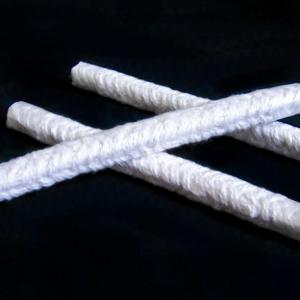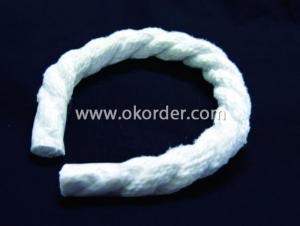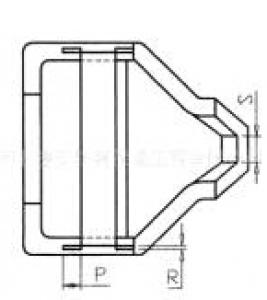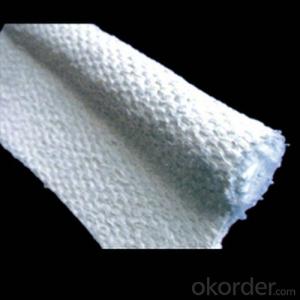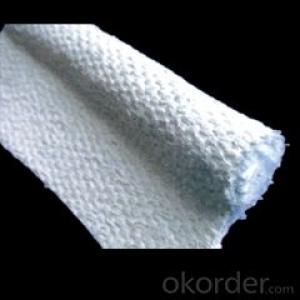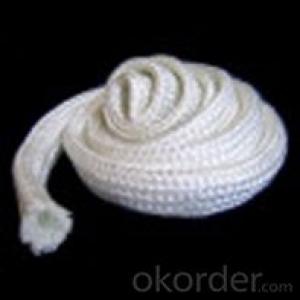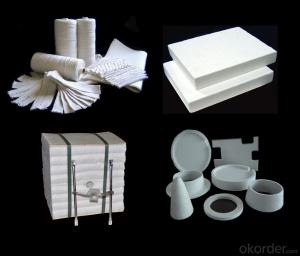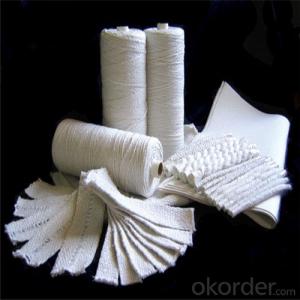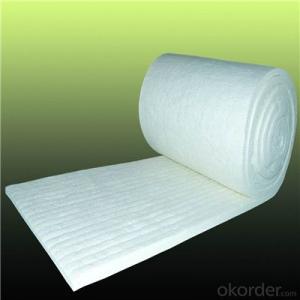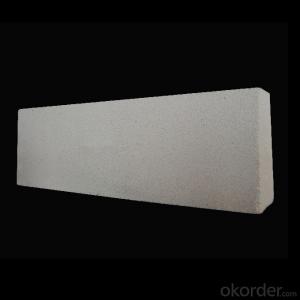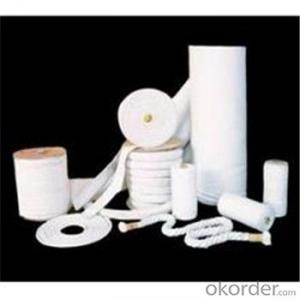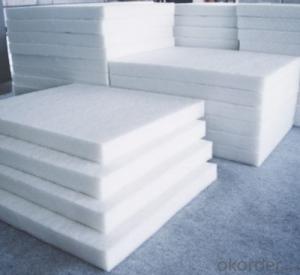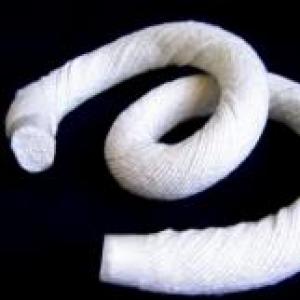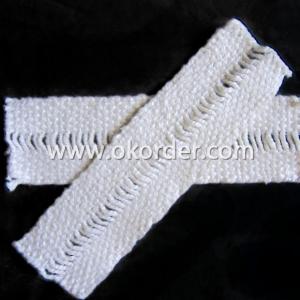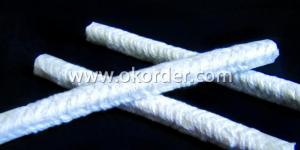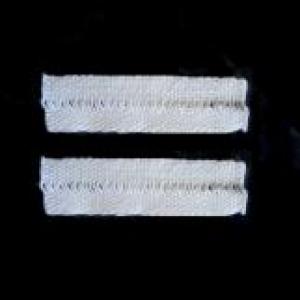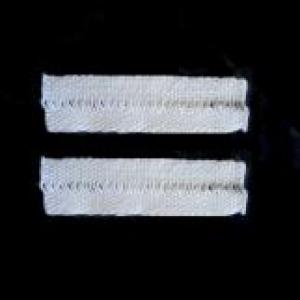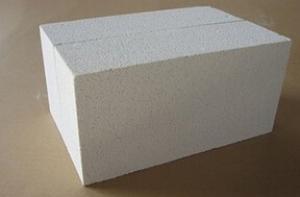High Temperature Ceramic Fiber Textiles 2024
- Loading Port:
- Qingdao
- Payment Terms:
- TT or LC
- Min Order Qty:
- 100 kg
- Supply Capability:
- 10000 kg/month
OKorder Service Pledge
OKorder Financial Service
You Might Also Like
Quick Details for Refractory Ceramic Fiber Textile with High Temperature
| Type: | Round Rope | Application: | Heat Insulation | Thickness: | 1.5-5mm |
| Width: | 1M | Length: | 30M | Grade: | HA (High Aluminum) |
| Chemical Composition: | Aluminium Silicate | Working Temperature: | 1260 | Place of Origin: | China (Mainland) |
| Brand Name: | Model Number: | DK-98 . |
Packaging & Delivery for Refractory Ceramic Fiber Textile with High Temperature
| Packaging Detail: | One or two rolls ceramic fiber belt are packed in P.P bag and then packed by carton again |
| Delivery Detail: | as per your order quantity |
Specifications
1.Refractory
3.Reinforced with fiberglass or stainless steel wire
4.Low heat conductivity
Product Description for Refractory Ceramic Fiber Textile with High Temperature
Product Advantages:
-Lightweight and low thermal conductivity.
-Excellent insulation at high temperature.
-Resists corrosive chemicals, commonly used acid and alkali.
-Strong and abrasive. It can be used in tough environment.
-Good substitute of asbestos products in many insulation and sealing applications.
-Reinforcing material: glass fiber wire, stainless steel wire, glass fiber and stainless steel wire
Typical Application
-Heat insulation furnace curtain, large area thermal insulation.
-Radiant heat shielding, flexible fabric expansion joints for high temperature piping.
-Safety blankets, welding blankets, protective and insulating covers, gaskets, cable or pipe wrapping, etc.
Ceramic fiber products covers
Ceramic fiber paper
Ceramic fiber board
Ceramic fiber blanket and felt
Ceramic fiber bulk
Ceramic fiber modules with kinds of mechanical anchor fixing
Ceramic fiber textiles (ceramic fiber yarn, cloth, tape, twisted rope & briaded rope)
Special shaped ceramic fiber products / vacuum formed ceramic fiber products
Refractory binders
Technical Data:
Item | Al2O3 | Al2O3 | Fe2O3 | K2O | Length of fiber mm | Diameter of fiber μm | Rate of linear change % | Bulk density kg·cm-3 | thermal conductivity W·(m·K)-1 | Working temp |
BF100 | 97 | ≥45 | ≤1.1 | ≤0.4 | 20~60 | 3~8 | ≤3 | 200 | ≤0.14 | 950~100 |
BF105-110 | 99 | ≥52 | ≤0.12 | ≤0.1 | 20~40 | 2~5 | ≤4.5 | 220 | ≤0.22 | 1050~1100 |
BF120 | 98.5 | ≥58 | ≤0.3 | ≤0.2 | 20~630 | 2~5 | ≤4.5 | 300 | ≤0.18 | 1200 |
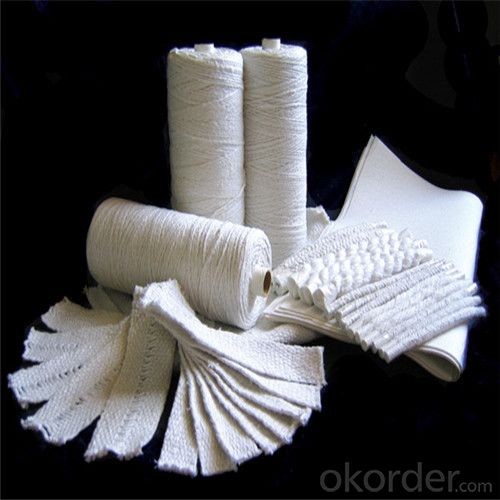
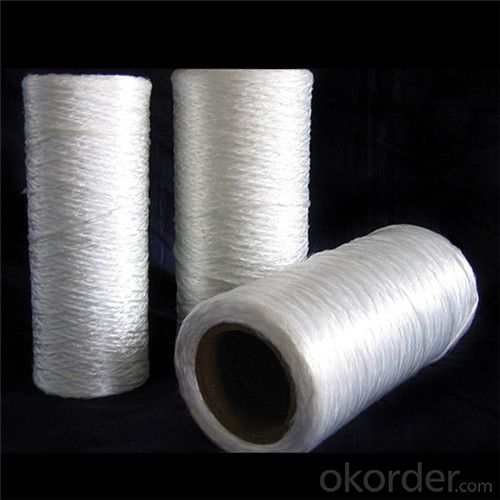
FAQ
1. Which products do you have?
We have all kinds of refractory brick, castable, mortar, cement, ceramic fiber products, etc.
Or you could browse our products to choose what you need.
2. Can you give me a general idea of the specification and technical data of your products?
Yes, catalog is on your request.
3. Can you give me a brief introduction of the application of your products?
We are mainly specializing in the refractory materials in iron and steel, cement, glass, ceramics, petrochemical, electric power Industry, etc.
4. If I need your offer, what information do you need?
In order to choose suitable products, it will be appreciated to provide us the information, such us specification, technical data, order quantity, products application etc.
If any question, please contact us freely.
- Q: Is aluminum silicate fiber completely insulated from heat transfer?
- Aluminum silicate fiber module in the well sealed at the same time, the thickness of heat insulation protection cases, can be isolated from the transfer of hot air to the maximum, complete isolation is not possible, the total fiber trolley furnace as an example, long-term use temperature of one thousand degrees, in addition to the door is sealed by the ceramic fiber packing do seal
- Q: What is the function of (ceramic) ceramic powder?
- In the process of porcelain fused to metal (PFM), the powder material used for sintering and making ceramic restoration is made. There are long stone and alumina ceramic powder, as well as a variety of crystal reinforced porcelain powder, high temperature porcelain powder and low temperature porcelain powder.
- Q: Is everybody's ceramic fiber cloth poisonous?
- With aluminum, zinc and other non-ferrous molten metal erosion capacity. Excellent high temperature strength. The bottom heat conductivity makes the product have good heat insulation performance. Excellent electrical insulation performance. Non-toxic, harmless, no adverse effects on the environment, excellent tensile properties.
- Q: What are the uses of ceramic fiber blankets?
- Ceramic fiber blanket is mainly used for high temperature, tough, self bearing high strength of the place, but also used for high airflow speed, mechanical destruction of large places. Ceramic fiber blanket can be used in these occasions.
- Q: What's the temperature of the high temperature ceramic fiber cloth and ceramic drill cloth?
- Ceramic fiber cloth, stainless steel wire, enhanced use temperature of 1050 degrees, glass fiber reinforced use temperature of 650 degrees.
- Q: What are the differences between digital textile printing ink and printing ink?
- 1. heat transfer ink:Transfer printing for polyester, nylon and spandex fabrics;2. active ink:Suitable for direct spray onto pure cotton, silk, nylon and other fabrics;
- Q: What are the man-made fibers polluting the environment?
- Fibers are roughly divided into natural fibers, man-made fibers, and synthetic fibers[natural fiber] refers to the natural growth or formation of fiber, including plant fiber (natural cellulose fiber), animal fibers (natural protein fiber) and mineral fiber. Plant fibers include: seed fiber, phloem fiber, leaf fiber, and fruit fiber. Seed fiber is the unicellular fiber that grows from the epidermal cells of some plant seeds. Such as cotton, kapok. Bast fiber is a single fiber or process fiber obtained from the phloem of some plants. Such as: linen, ramie, jute. Leaf fiber is the process fiber obtained from the leaves or sheaths of some plants. Such as: sisal, abaca. Fruit fiber is the fiber obtained from the fruit of some plants. Coconut fiber. An animal fiber (natural protein fiber) that includes hair, fiber, and gland fibers. Hair follicles: fibers of the hair follicles that have multicellular structures and are composed of keratin. Such as: wool, cashmere, camel hair, rabbit hair, Ma Haimao. Silk fibers: fibers formed from the glands of some insects, especially those produced by lepidopteran larvae, and fibers formed by secretions of some mollusks. Such as: silk.
- Q: The difference between ceramic fiber cloth and ceramic fiber paper
- 1. appearance. The ceramic fiber cloth has an obvious grid like appearance, and the ceramic fiber paper is very few or even mesh like.2. density. The density of ceramic fiber paper is greater than that of ceramic fiber cloth.3. thickness. Ceramic fiber paper, the thinnest can do 0.5mm, ceramic fiber paper can not do so thin, generally thin, there are also 2mm.4. stand erect. Ceramic fiber paper can be like in our life that can be placed on the A4 paper, mold, stand up. Ceramic fiber cloth is like the fabric used in our 5. lives. It's soft and doesn't stand upright.6. tear resistance. The toughness of the ceramic fiber paper is not as good as that of the ceramic fiber cloth.
- Q: Which is better, ceramic fiber or spray velvet?
- Ji'nan Huolong thermal ceramics limited liability company to help you analyze: thrown silk and spray cotton, which is better? Which process is more suitable for producing carpets? Fire dragon energy saving from the technical point of view is as follows:1, fiber diameter: rejection fiber more coarse, rejection filament fiber is generally 3.0-5.0 mu m, spinneret fiber is generally 2.0-3.0 mu m;2, the length of fiber yarn: rejection fiber longer, the rejection of silk fiber is generally 150-250mm, spinneret fiber is generally 100-200mm;3, the coefficient of thermal conductivity: spray cotton fiber is lower than that of the thrown silk;4, the tensile and flexural strength: thrown silk because fiber thicker than that of spraying cotton;
- Q: Does the component of textiles contain 70% acrylic? Does it hurt the body?
- Acrylic may sound strange, because it is a new word that has appeared on the mainland in the last two years. It was not until 2002 that the advertising industry, furniture industry and handicraft industry were gradually understood by a few. "Acrylic" is a transliteration of foreign words, English is ACRYLIC, it is a chemical material. The chemical name is called "PMMA", which belongs to propylene alcohol, commonly known as "specially treated organic glass". In the application industry, its raw materials usually appear in the form of particles, plates, pipes and so on.
Send your message to us
High Temperature Ceramic Fiber Textiles 2024
- Loading Port:
- Qingdao
- Payment Terms:
- TT or LC
- Min Order Qty:
- 100 kg
- Supply Capability:
- 10000 kg/month
OKorder Service Pledge
OKorder Financial Service
Similar products
Hot products
Hot Searches
Related keywords





